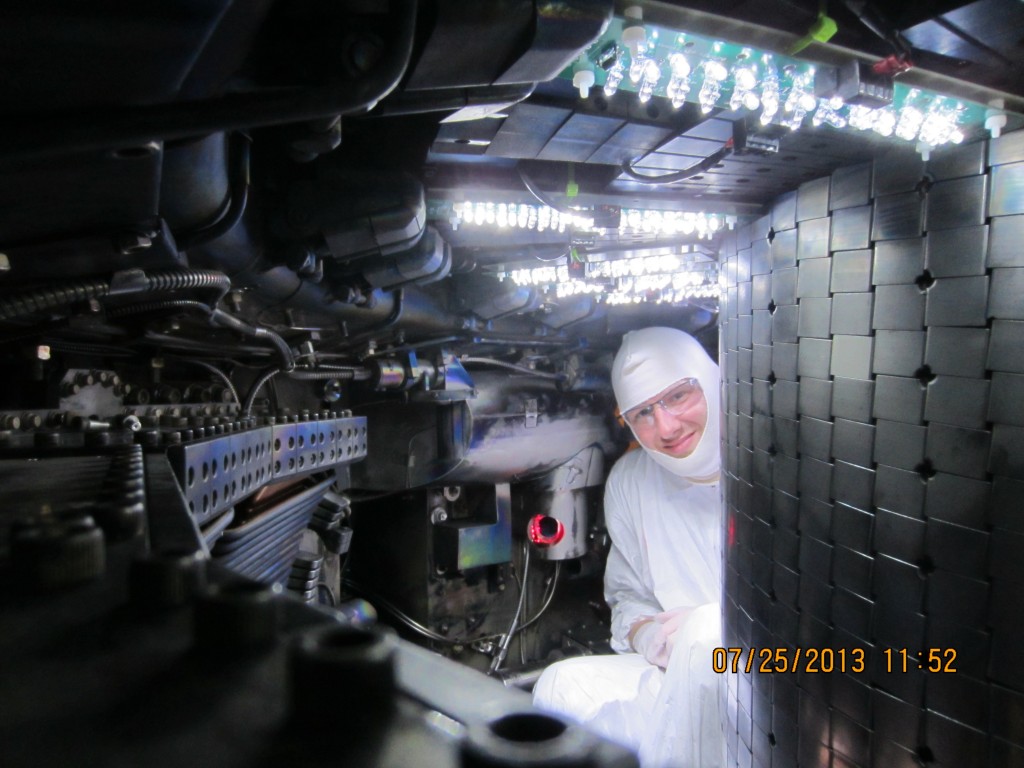 I am currently pursuing my PhD at the Plasma Science and Fusion Center (PSFC) at MIT. My research primarily concerns the building of new and innovative optical systems for the Alcator C-Mod tokamak (a prototype fusion reactor) and using them to measure important plasma properties to test our theoretical understanding of plasma physics.
I am currently pursuing my PhD at the Plasma Science and Fusion Center (PSFC) at MIT. My research primarily concerns the building of new and innovative optical systems for the Alcator C-Mod tokamak (a prototype fusion reactor) and using them to measure important plasma properties to test our theoretical understanding of plasma physics.
I received my B.S. in Mechanical Engineering and Engineering Physics, with Honors and distinction, from the University of Nebraska-Lincoln in May of 2008 where I also minored in Mathematics. During my final two years of undergraduate studies I worked as a researcher in a condensed matter physics lab measuring the magnetic precession in thin metallic films. Using a pump-probe optical system in conjunction with a novel photo-conductive switch and high precision polarization techniques I measured the magnetic precision in thin metallic films with pico-second resolution. The research goal was to better understand the underlying dynamics of switching magnetic domains. A future application would be faster, cheaper, improved hard drives.
After graduation I wanted to venture out in an alternate direction with my research, particularly one straddling engineering and physics. I enrolled in the Nuclear Science and Engineering department at MIT in the Fall of 2008, where I am presently pursuing my Ph.D in Applied Plasma Physics, which I expect to complete in June of 2014.
My current research focuses on developing an advanced motional Stark effect (MSE) diagnostic to measure the current profile inside the Alcator C-Mod tokamak using polarized light. Of particular interest is the measurement of the current profile produced using high power lower hybrid current drive (LHCD) in comparison to the profile predicted by cutting edge numerical simulations. The goal is to understand how current can be driven inside tokamaks to control the magnetic geometry. This has implications for how well tokamaks contain heat and particles and how long the device can operate. Our current understanding of how LHCD works is mostly through numerical simulations and global observations. My goal is to routinely measure the actual driven current profile to determine if the sophisticated models are correct. This work is important to better predict the future operation of practical fusion reactors, which will require all current to be driven with precise profile control.
During my research I have developed, designed and procured many engineering systems including specialized optical systems that allow for the calibration of the diagnostic during operation and the first simultaneous polarization measurements of multiple spectral regions inside the tokamak. Additionally, I have developed computational tools to aid in the understanding and analysis of the polarized light emitted from the tokamak. I have also developed advanced imaging techniques to help us better understand what occurs inside these complicated devices.
In summary, my research interests include:
- Development of high-precision instruments for use in challenging environments, particularly inside fusion experiments
- Systematic comparison between numerical simulation and actual experimental measurements in an effort to develop predictive capability
- Design concepts for next-generation fusion reactors making use of advanced materials and techniques such as high temperature superconductors and additive manufacturing
- The understanding and utilization of polarized light for engineering and physics
- Advanced imaging in science and technology

Me inside the Alcator C-Mod fusion experiment next to the Motional Stark Effect instrument (the red glow)
In my free time (which is rare at MIT) I play hockey and sail competitively in Boston harbor and around the Northeast with Team Migration.